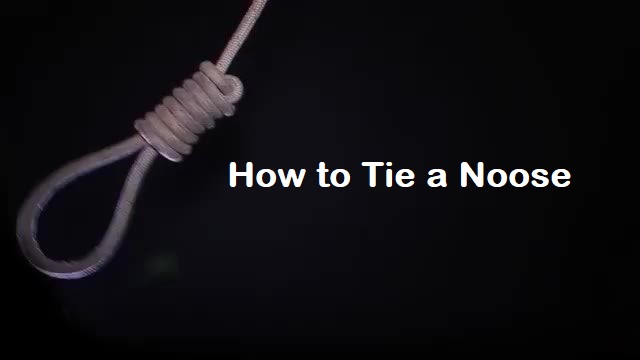Tying a noose is a topic that often arises in various contexts, from survival skills and rope crafts to safety demonstrations. While it’s crucial to address this subject with sensitivity, understanding how to tie a noose can be essential in scenarios that involve knot tying techniques.
This guide will walk you through the step-by-step process of how to tie a noose, its uses, and the importance of practicing knot-tying skills responsibly.
What is a Noose?
A noose is a type of knot that creates a loop with a slipknot that tightens when pulled. It is commonly known for its historical use in executions but also serves practical purposes in various applications, such as climbing, boating, and securing items. Understanding how to tie a noose properly can be useful in many scenarios, including emergency situations where a strong, adjustable knot is needed.
How to Tie a Noose: Step-by-Step Instructions
- Gather Materials To start, you’ll need a length of rope or cord. The material should be durable enough to handle the pressure applied to it. For practice, a standard length of rope, around 6-8 feet, is usually sufficient.
- Create the Initial Loop Begin by creating a loop in the rope. Hold the end of the rope and form a large loop, leaving enough length on one side to work with. Ensure the loop is large enough to accommodate the intended use but not too large that it becomes unwieldy.
- Make the First Wrap With the loop in place, take the working end of the rope (the end you’re holding) and wrap it around the loop. Start wrapping from the bottom of the loop, making sure each wrap is tight and close to the previous one. This will form the initial structure of the noose.
- Continue Wrapping Keep wrapping the rope around the loop, working your way up to the top. The number of wraps can vary based on your needs, but generally, 5-6 wraps are sufficient to create a secure noose. Ensure each wrap is tight and even to prevent slippage.
- Thread the End Once you’ve completed the desired number of wraps, thread the working end of the rope through the loop. This step is crucial as it forms the slipknot. Pull the working end through, making sure the knot tightens properly.
- Secure the Noose Pull both ends of the rope to tighten the noose. Adjust the size of the loop as needed, ensuring it’s secure and functional for your intended use. The knot should hold firmly without slipping.
Practical Uses of a Noose
While the noose is often associated with negative connotations, it has practical applications in various fields:
- Survival Situations: In survival scenarios, a noose can be used for trapping animals or securing gear. Knowing how to tie a noose can be an essential skill when dealing with survival situations.
- Rope Crafts: In outdoor activities and rope crafts, the noose is a versatile knot. It can be used for hanging objects, securing tents, or creating makeshift handles.
- Climbing and Boating: The noose can serve as a temporary solution for securing climbing ropes or securing items on a boat. It provides a strong and adjustable knot that can be quickly tied and untied.
Safety and Sensitivity
It’s important to approach the subject of tying a noose with sensitivity and awareness. The noose has a historical and emotional weight due to its association with tragic events. If you’re teaching or learning about knots, it’s essential to focus on the practical applications and ensure that the discussion is conducted respectfully.
Alternatives to the Noose
If you’re interested in learning about other knots for practical purposes, there are numerous alternatives to the noose that can be used for various applications. Knots like the bowline, clove hitch, and figure-eight knot offer similar functionality without the negative connotations.
Conclusion
Understanding how to tie a noose is a valuable skill for various practical applications, from survival situations to rope crafts. By following the steps outlined in this guide, you can learn how to tie a noose effectively and responsibly. Remember to use your knot-tying skills with care and sensitivity, recognizing the broader context in which this knot exists.





